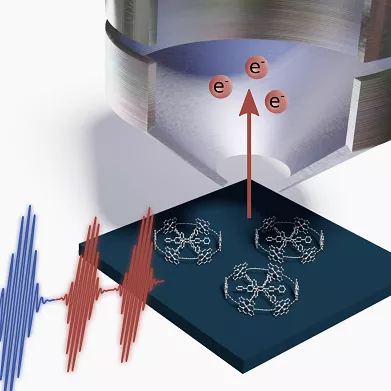PhD project: mapping charge carriers in space and time
Spatio-temporal studies of electronic excitation and charge carrier dynamics in molecular and solid state materials
The interdisciplinary project encompasses spatially-resolved studies of electronic excitations and charge carrier dynamics in molecular as well as semiconductor and plasmonic systems. The simultaneous temporal and spatial resolution is achieved by combining multidimensional femtosecond spectroscopy with photoemission electron microscopy. The goal is to “see” what happens to excitations and electrons in molecules and nanostructures after they are excited by light. The understanding of the processes gained in the project will be important for designing future technologies based on nanomaterials.
Introduction
The Faculty of Science conducts research and education within Biology, Astronomy, Physics, Geosciences, Chemistry, Mathematics and Environmental Sciences. The Faculty is organized into nine departments, gathered in the northern campus area. The Faculty has approximately 1500 students, 330 PhD students and 700 employees.
The Division of Chemical Physics at the Natural Science Faculty consists of approximately 50 researchers and students located at the Kemicentrum in north-eastern Lund. The research topics explored by the group range from novel synthesis routes to cutting-edge photovoltaics and ultrafast spectroscopic analysis.
The project will be implemented within the existing collaboration between the Division of Chemical Physics and Division of Synchrotron Radiation Research, and in the NanoLund Center environment.
See Donatas Zigmantas' group page for information about the activity and members of the group
Project specification
Work duties
The candidate will have to learn basic theoretical background and experimental implementation of the advanced time-resolved spectroscopy and photoemission electron microscopy (PEEM). By employing learned time-resolved PEEM technique, a variety of novel materials will be studied, including self-assembled molecules on the surface, nanostructured metallic, semiconductor and hybrid systems. Obtained data on excitation and electron dynamics with spatial resolution will be analysed. This will enable us to draw conclusions, for example, regarding functional inhomogeneity among molecular systems and hot charge carrier diffusion in the solid state systems. Variety of materials used in the studies will be obtained from collaborators within NanoLund Center and beyond.
The main duties of doctoral students are to devote themselves to their research studies which includes participating in research projects and third cycle courses. The work duties can also include teaching and other departmental duties (no more than 20%).
Desirable skills
- Hands on experience with ultrashort pulse lasers and time-resolved spectroscopy.
- Basic knowledge of the non-linear spectroscopy theory.
- Experience with photoemission electron microscopy.
- Familiarity with complex data analysis.
- Programming skills (for example, Matlab, LabView or Python).
Enrolment: Chemical physics at the Science Faculty
The subject curricula (general syllabi) for subjects within chemistry, amended in June 2019, are currently being translated and will appear on the Science faculty's page for General syllabi and individual study plans soon.
The Science faculty's page for General syllabi and individual study plans
Supervisors
Donatas Zigmanats and Anders Mikkelsen
Homepage of Donatas Zigmantas, Prof. at the Div. of Chemical Physics
Anders Mikkelsen, Prof. at Synchrotron Radiation Research and Vice-Director of NanoLund
Positions in the 2nd call
The call was open from 25 June to 25 August 2020. Six PhD students were recruited, among them five are eligible for GenerationNano funding. Three of the GenerationNano students have recently started their employment and the two remaining will start soon.


